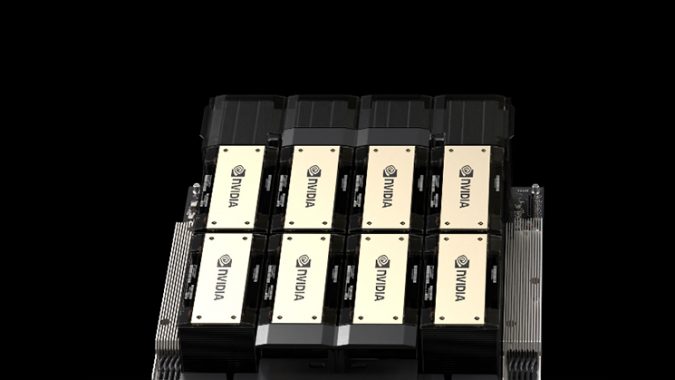


pNFS Provides Performance and New Possibilities
At the cusp of a new era in technology, enterprise IT stands on the brink of the most profound transformation since the Internet's inception. This seismic shift is propelled by the advent of arti …

Public and Private Sectors Team up to Solve HPC Software Problem
Software implementation in high-performance computing is getting more fragmented as organizations opt for tools in their walled garden environments.
However, a new organization formed under …

HPCwire’s 2024 People to Watch
Find out which 12 HPC luminaries are being recognized this year for driving innovation within their particular fields.

Latest CXL Spec Lined up to Support DDR6
November 14, 2023
In a few years, servers may not look the same as memory, storage, and accelerators move to separate enclosures. An interconnect called CXL is making that possib Read more…

AI-Accelerated Technology Investment Guidelines for HPC
October 25, 2023
When planning an AI or HPC investment, applications are where the rubber meets the road and ultimately determine the benefits of any hardware investment. In add Read more…

Fortran: Still Compiling After All These Years
September 20, 2023
A recent article appearing in EDN (Electrical Design News) points out that on this day, September 20, 1954, the first Fortran program ran on a mainframe compute Read more…

Top 5 Trends in HPC for the First Six Months of 2023
July 12, 2023
Editor’s note; In light of recent updates to Google’s Privacy Policy, “For example, we use publicly available information to help train Google’s AI mo Read more…

PCIe Market to Hit $50B; PCIe 7.0 v 0.3 Now Available
June 13, 2023
Steady technical progress and continued market traction were key points of emphasis coming from the PCI-SIG Developers Conference held this week in Santa Clara. Read more…

For the First Time, UCIe Shares Bandwidth Speeds Between Chiplets
June 7, 2023
The first numbers of the available bandwidth between chiplets is out – UCIe is estimating that chiplet packages could squeeze out communication speeds of 630Gbps, or 0.63Tbps, in a very tight area. That number was shared by the Universal Chiplet Interconnect Express consortium last month... Read more…

MLPerf Inference 3.0 Highlights – Nvidia, Intel, Qualcomm and…ChatGPT
April 5, 2023
MLCommons today released the latest MLPerf Inferencing (v3.0) results for the datacenter and edge. While Nvidia continues to dominate the results – topping al Read more…

Top HPC Players: It’s Time to Get Serious About Security
March 9, 2023
Time’s up: nearly everyone agrees it’s about time to become serious about bringing security safeguards to high-performance computing systems, which has been Read more…

- Click Here for More Headlines

Whitepaper
Transforming Industrial and Automotive Manufacturing
In this era, expansion in digital infrastructure capacity is inevitable. Parallel to this, climate change consciousness is also rising, making sustainability a mandatory part of the organization’s functioning. As computing workloads such as AI and HPC continue to surge, so does the energy consumption, posing environmental woes. IT departments within organizations have a crucial role in combating this challenge. They can significantly drive sustainable practices by influencing newer technologies and process adoption that aid in mitigating the effects of climate change.
While buying more sustainable IT solutions is an option, partnering with IT solutions providers, such and Lenovo and Intel, who are committed to sustainability and aiding customers in executing sustainability strategies is likely to be more impactful.
Learn how Lenovo and Intel, through their partnership, are strongly positioned to address this need with their innovations driving energy efficiency and environmental stewardship.
Download Now
Sponsored by Lenovo
Whitepaper
How Direct Liquid Cooling Improves Data Center Energy Efficiency
Data centers are experiencing increasing power consumption, space constraints and cooling demands due to the unprecedented computing power required by today’s chips and servers. HVAC cooling systems consume approximately 40% of a data center’s electricity. These systems traditionally use air conditioning, air handling and fans to cool the data center facility and IT equipment, ultimately resulting in high energy consumption and high carbon emissions. Data centers are moving to direct liquid cooled (DLC) systems to improve cooling efficiency thus lowering their PUE, operating expenses (OPEX) and carbon footprint.
This paper describes how CoolIT Systems (CoolIT) meets the need for improved energy efficiency in data centers and includes case studies that show how CoolIT’s DLC solutions improve energy efficiency, increase rack density, lower OPEX, and enable sustainability programs. CoolIT is the global market and innovation leader in scalable DLC solutions for the world’s most demanding computing environments. CoolIT’s end-to-end solutions meet the rising demand in cooling and the rising demand for energy efficiency.
Download Now
Sponsored by CoolIT
Advanced Scale Career Development & Workforce Enhancement Center
Featured Advanced Scale Jobs:
HPCwire Resource Library
HPCwire Product Showcase
© 2024 HPCwire. All Rights Reserved. A Tabor Communications Publication
HPCwire is a registered trademark of Tabor Communications, Inc. Use of this site is governed by our Terms of Use and Privacy Policy.
Reproduction in whole or in part in any form or medium without express written permission of Tabor Communications, Inc. is prohibited.
































